
Jotham79
-
Posts
502 -
Joined
-
Last visited
Content Type
Profiles
Forums
Downloads
Posts posted by Jotham79
-
-
I strongly agree with samuijimmy. Seeds from seed racks that get hit by sun are probably bad. Find a store that has their racks well inside. Consider buying seeds in cans from an inside shelf. Even then if the packets get exposed to high temps, but not sun, the viability can go way down.
Except for sweet peppers the none of the other seeds need to go into a cup or bag. Sow directly into the ground. Take some of your commercial soil and mix it in you beds.
For coriander or cilantro wrap your seeds in a cloth and soak thoroughly and then moisten every few hours until the seeds start to sprout and sow directly into your bed. I would soak the snow peas for an hour before planting and maybe do some like the coriander
For now I wouldn't worry about the soil. If none of your seeds germinate you got bad seeds. If the seeds germinate and don't grow, then look at the soil and water.
Good luck.
-
PM me your email address and I can send you an excel spreadsheet on feed formulation. Also we can talk more about Manilla Tamarind, Putsa, and Quail. On the quail I am getting some hatching eggs for 2 strains of quail. All of the parents are over 400 grams (average Thai quail 170 grams). Heat is a problems and if I get a hatch, I doubt they break 370.
-
Duplicate post
-
- Popular Post
- Popular Post
Here is one of our water sources or around 20% of our land ...the first two pics was in October last year and the last two was March 2016. we have planted some of palm trees.
Here are some thoughts about your ponds:
There is no such thing as a perfect pond. By this I mean that a pond designed for fish farming will not be the best to hold irrigation water. In your case I would aim for irrigation and take fish as you can.
- I would deepen both ponds (4 meters) especially the small one. Possibly dig a small area 1.5 meters deeper to facilitate seining. I would pump the large pond dry and keep water in the front one.
- Replace any trees that don’t yield some fruit or food. I really like Manila Tamarind. Make sure your trees are set back at least 1.5 meters with 2 meters being better. It is difficult to work a seine with trees too close and trees too close can fall in.
- As soon as you get a little water in the large pond in the rainy season (hopefully in July), I would stock with 2000 to 3000 pla tapian. Last year I got them at a government hatchery for 200 baht per thousand. These fish would need no care and would be of a sellable size in 4 months. You could toss in leafy veggies (outside of cabbages….) they love Manilla Tamarind and the bugs that fall off the branches. I would not be afraid to add an extra 1000 fry to feed the pla chon that are most likely in there. I would keep box traps or net traps in there for the pla chon and pla duk. Small pond would work for pla duk, pla nin, and frogs. Ducks or geese would be happy in either one.
Here are some photos of what I am talking about.
These are the fish nets
a cricket trap to feed you, or the fish, or the chickens, or the ducks.... You need a light at the top and water at the bottom. Would work on Meng Mow too.
Manila Tamarind fruiting and on pond bank.
Here are the Putsa and quail I mentioned earlier
Here are the frogs
-
 8
8
-
- Popular Post
- Popular Post
I will agree that there are a lot of ways to lose money farming, but it is certainly not impossible to make money. There has been a lot of good advice and some not so good. I have lost more than my share of money farming in Thailand and know why it happened. I think you have a very interesting project. I have done everything over the last 20 years here on your list except grapes, lychee, rambutan, mangosteen, mulberry, roselle, pigs, and earth worms, but have done prawns, frogs, quail and a few other crops and fruits (and have forgot some). With enough work almost everything you are doing can be profitable. Here are some thoughts I have in no particular order and forgive me if you are doing them already:
- Consider adding a small rice mill. Around here the operator gets the rice polishings and the rice hulls. This gives you a supplemental income in the form of the rice polishings that can be sold or feed to your animals. And the rice hulls could be composted to return organic materials to your soil.
- I will predict that you will have problems with grapes, durian.
- I would reduce or eliminate Mangosteen, rambutan, lychee, ma fie, but not til you see if they are good producers. See my next point.
- Learn how to air layer and graft and make your own trees to sell. Double grafting is even better and more profitable. Thing about every tree you bought. Your work, only a little space and a good return. Seed papaya, and seed other shrubs and clone bamboo and bananas.
- Add a Thai Grapefruit tree to clone from.
- Add manila tamarind. They will do especially well around your ponds. Fish love fruit that falls and so do chickens and ducks that free range. You have to make sure you get a good strain so look at the fruit on the parent stock
- Add1-2 Kaffir lime or more.
- Basil will grow right up alongside a building. Grow extra to feed your livestock. Look at other herbs.
- Add Putsa Apple.
- Add as many water collection jars as is practical to every building.
- Consider some concrete rings to raise catfish but I would stick with Big Oui (I have never had pla duck Russia grow well). There is also a strain of climbing perch that is promising and I am trying to get a small sample to try out. I would also consider one crop of pla duk a year in the smaller pond nearer you house. Drain it to fill the other
- I would look for the best strain of tilapia you can find and raise them in nets. Throw some Pla Sawai in the ponds if you like to eat them, but not too many. I love hamook.
- Geese are hard to make money on, but a couple out on your ponds will let you know if you have visitors. If you are well respected in the village, you will have less loss. A mean dog won’t hurt either.
- Consider getting a small plot and opening a market. Put in a covered structure and run power and build some stalls. Let everyone use it for free for a while and use it yourself. It can be as simple or fancy as you think will work.
- I would probably opt to pass on Yasohotin. It will cost you about 100 baht per trip and rental on a stall. You are better off building a quality operation and selling as much as you can in the local market which will get more locals to know about your farm and lead to walk in customers. A consistent presence will be rewarded.
- Look at making your own poultry feed. Consider dropping chickens except for your own use. I am working on a layer/ gai ban cross that is a good layer of small to medium eggs, and meats out more like a gai ban. Put the hens with gai ban roosters and you can make money selling for meat. I would go with Pekin ducks and may be start with a few on your ponds. If you must have laying chickens buy good POL pullets, then cage/coop raise them. Free ranging or just letting them wander around a yard is a money loser.
- Consider quail. I can give you a lot of info on this. Per square meter you will make more than chicken or ducks.
- Consider crickets. It was a fad years ago and I thought it died out, but two local feed stores in Petchabun are selling cricket feed bulk. I haven’t done it, but it would be something to look at.
- The Santol makes a good border for a field or road. Consider drip tape.
- Put Papaya around your young fruit trees to shade them some while they are young. Some folks use bananas
- Prik Keenu will grow well in the shade of bananas and papayas.
- Forget crops for farang like zucchini, strawberries, bell peppers, head lettuce ect…. At least in the beginning .
- Learn about drip tape (not the same as the hose type irrigation) and plastic mulch. It is used on melons and other crops. You will use a lot less water.
- You tube and Facebook can be your friend. You are a lot more likely to find people doing exactly the same crop(s) as you and over time will help you advertise.
- Going organic can be the right thing to do, but most of your local buyers will not pay a premium. Initially it is important to compete on a fair footing.
- We have 2 rose apple trees and the wife planted a bunch of chillis around one and it had considerably few pests. I hear that chrysanthemums do the same.
- A light over your pond may help a few pest to become fish food and may discourage visitors.
- Keeping records will be a valuable exercise over time. Note weekly market prices for crops you are thinking about and when the high prices tend to occur….New Years, Songkran, Chinese New Years, when schools are open or closed. Obviously high prices can mean it is the wrong time a year or it could mean too much water is needed. Once you are running keep detailed costs and income records. When possible track a particular crop just to see what is happening.
I have forgotten at least this much and will let you know if anything comes to me.
Just to be clear, I am not recommending you do all or any particular activities, you will have to set your goals andlimits. I think you are someone who likes to learn and this will be a fun process. Something that works in one place may not work for you and vice versa. You do not need to explain yourself to naysayers. It is easy to say something can’t happen and impossible to prove it. Search for people that have similar experience that are willing to share and have fun.
Chok Dee
Pardon me but nowhere in this post does it say I Made a Killing Farming in thailand.
Never take advice from a fat man on how to lose weight.
Nowhere in this thread does it say anything about making a killing farming. I have never claimed to make a killing in faming, but here is what I will claim:
I have farmed longer than you in Thailand.
I have more land than you.
I have lost more money farming different crops and livestock than you (meaning I know a lot more than you about what doesn't work and why)
I have made more money than you farming.
Never listen to a man who doesn't farm about farming
-
 5
5
-
- Popular Post
- Popular Post
I will agree that there are a lot of ways to lose money farming, but it is certainly not impossible to make money. There has been a lot of good advice and some not so good. I have lost more than my share of money farming in Thailand and know why it happened. I think you have a very interesting project. I have done everything over the last 20 years here on your list except grapes, lychee, rambutan, mangosteen, mulberry, roselle, pigs, and earth worms, but have done prawns, frogs, quail and a few other crops and fruits (and have forgot some). With enough work almost everything you are doing can be profitable. Here are some thoughts I have in no particular order and forgive me if you are doing them already:
- Consider adding a small rice mill. Around here the operator gets the rice polishings and the rice hulls. This gives you a supplemental income in the form of the rice polishings that can be sold or feed to your animals. And the rice hulls could be composted to return organic materials to your soil.
- I will predict that you will have problems with grapes, durian.
- I would reduce or eliminate Mangosteen, rambutan, lychee, ma fie, but not til you see if they are good producers. See my next point.
- Learn how to air layer and graft and make your own trees to sell. Double grafting is even better and more profitable. Thing about every tree you bought. Your work, only a little space and a good return. Seed papaya, and seed other shrubs and clone bamboo and bananas.
- Add a Thai Grapefruit tree to clone from.
- Add manila tamarind. They will do especially well around your ponds. Fish love fruit that falls and so do chickens and ducks that free range. You have to make sure you get a good strain so look at the fruit on the parent stock
- Add1-2 Kaffir lime or more.
- Basil will grow right up alongside a building. Grow extra to feed your livestock. Look at other herbs.
- Add Putsa Apple.
- Add as many water collection jars as is practical to every building.
- Consider some concrete rings to raise catfish but I would stick with Big Oui (I have never had pla duck Russia grow well). There is also a strain of climbing perch that is promising and I am trying to get a small sample to try out. I would also consider one crop of pla duk a year in the smaller pond nearer you house. Drain it to fill the other
- I would look for the best strain of tilapia you can find and raise them in nets. Throw some Pla Sawai in the ponds if you like to eat them, but not too many. I love hamook.
- Geese are hard to make money on, but a couple out on your ponds will let you know if you have visitors. If you are well respected in the village, you will have less loss. A mean dog won’t hurt either.
- Consider getting a small plot and opening a market. Put in a covered structure and run power and build some stalls. Let everyone use it for free for a while and use it yourself. It can be as simple or fancy as you think will work.
- I would probably opt to pass on Yasohotin. It will cost you about 100 baht per trip and rental on a stall. You are better off building a quality operation and selling as much as you can in the local market which will get more locals to know about your farm and lead to walk in customers. A consistent presence will be rewarded.
- Look at making your own poultry feed. Consider dropping chickens except for your own use. I am working on a layer/ gai ban cross that is a good layer of small to medium eggs, and meats out more like a gai ban. Put the hens with gai ban roosters and you can make money selling for meat. I would go with Pekin ducks and may be start with a few on your ponds. If you must have laying chickens buy good POL pullets, then cage/coop raise them. Free ranging or just letting them wander around a yard is a money loser.
- Consider quail. I can give you a lot of info on this. Per square meter you will make more than chicken or ducks.
- Consider crickets. It was a fad years ago and I thought it died out, but two local feed stores in Petchabun are selling cricket feed bulk. I haven’t done it, but it would be something to look at.
- The Santol makes a good border for a field or road. Consider drip tape.
- Put Papaya around your young fruit trees to shade them some while they are young. Some folks use bananas
- Prik Keenu will grow well in the shade of bananas and papayas.
- Forget crops for farang like zucchini, strawberries, bell peppers, head lettuce ect…. At least in the beginning .
- Learn about drip tape (not the same as the hose type irrigation) and plastic mulch. It is used on melons and other crops. You will use a lot less water.
- You tube and Facebook can be your friend. You are a lot more likely to find people doing exactly the same crop(s) as you and over time will help you advertise.
- Going organic can be the right thing to do, but most of your local buyers will not pay a premium. Initially it is important to compete on a fair footing.
- We have 2 rose apple trees and the wife planted a bunch of chillis around one and it had considerably few pests. I hear that chrysanthemums do the same.
- A light over your pond may help a few pest to become fish food and may discourage visitors.
- Keeping records will be a valuable exercise over time. Note weekly market prices for crops you are thinking about and when the high prices tend to occur….New Years, Songkran, Chinese New Years, when schools are open or closed. Obviously high prices can mean it is the wrong time a year or it could mean too much water is needed. Once you are running keep detailed costs and income records. When possible track a particular crop just to see what is happening.
I have forgotten at least this much and will let you know if anything comes to me.
Just to be clear, I am not recommending you do all or any particular activities, you will have to set your goals andlimits. I think you are someone who likes to learn and this will be a fun process. Something that works in one place may not work for you and vice versa. You do not need to explain yourself to naysayers. It is easy to say something can’t happen and impossible to prove it. Search for people that have similar experience that are willing to share and have fun.
Chok Dee
-
 11
11
-
 2
2
-
Visit 2 or 3 of the larger feed stores in your area and ask if they know of a local hatchery or broker. Also, a few years back we ordered fry (small fish) from, a feed store.
For small amounts go to your local morning wet market talk to the folks selling fry.
Contact Nam Sai farms and ask if anyone in you area orders from them and see if you can piggy back an order. They also have a few farms scattered around that are licensed to sell their fish. They will air ship too.
Cheers
.
-
Is there anything around there anything around there for less than 23K?
-
I am retiring from teaching and would like to get in touch with anyone currently tutoring for the expat community or with expats looking to have family tutored.
Thanks,
-
How much land? 1 rai...10 rai.....? What are you wanting to spend? How many years will you spend there; you will need a multi year lease. What is your idea of Minimalist?(there are some prefabs for around 150K). Which months do you plan on being there? How close do you need to be to a large town?
-
Are you 2 days back to back or spread out? If spread out, what is the longest you would be away from your farm? Many fruit trees (Mangoes, jackfruit, bananas, papaya, ect...) will do well being watered twice a week after they are established. Another equally important factor is that the fruit grow well in your local. I would wait til Mid July, plant properly, soak thoroughly (at least 20 liters) when you plant and 2 times a week unless you get a good rain. By the end of you rainy season they should be fine with weekly or bi-weekly water.
-
Up your way there should be a lot of trees that could provide an attractive wood. We cut down a large tree with orange flowers that produced large seed pods that had a lovely wood. I think it may have been a moringa tree in the acacia family. I would try finding a large tree and negotiate the purchase direct from the land owner. Then pay someone with a portable saw mill to cut it down in the general sizes that you want. We had 5 large (3 inch thick) table tops made and had the rest ripped out in 1 inch planks.
-
Black Chickens I say boy you say Black Chickens.
 Twenty new Blcak Chicken chicks 7 days old.
Twenty new Blcak Chicken chicks 7 days old.
Well done. I wonder how many got the Fog Horn Leg Horn reference.
-
Ma-prang is Mariam Plum which looks like a small mango and has a bright yellowish orange color. Star fruit and star apple are 2 different things. I have start fruit and maprang on my farm, but have never come across the other. I will ask around about star apple.
-
I tend to look at things from a profit side of things. You would want to look at the time of year and water requirements. I would consider taking Feb and March off as it is (usually) very hot. Having said that, the time to plant mung beans is right after the rainy season in say mid November and harvest in February. I would go with sweet corn as we are getting up to 10 baht per kg un husked. Any bad ears go to my chickens and rabbits. In May, June, July we go for Long beans and get a good price. Bad beans get chopped up and the chickens love them, the rabbits eat them whole. For a 3rd crop there are a few, but I would look at squash or pumpkin. Corn, beans, and squash can actually be grown together, I think they are called the "3 sisters". In the cool season you can do garlic and the rest of the time spring onions. Long eggplant does well in the market in September and October. Because of the season pests can be a problem; maybe plant your marigold in amongst them. If you are looking for a quick crop, cucumbers are good but take a higher amount of water for the price you get, but again the chickens and rabbits love them (no real nutritional value though). Most of the leafy green veggies have a short season, but we have so many problems with pests that it isn't worth it because of the spraying. and bad leaves (after washing) can go to your chickens, rabbits and fish. Coriander does a little better but the price is really hit or miss. I almost forgot Thai chillies and you are looking at picking in 3 months, but continued production for a couple of more months. You just need to watch your local market to see what the prices are during the year.
-
I did some calculations based on a good crop a few years ago when I had good records. We averaged 650 kg per rai and my guess is that popcorn done well is more likely to bring you 450 Kg per rai. The big factor is what you are willing to pay per kg so the farmer has an incentive to switch crops.
There are 2 main systems around here. First a broker will make a deal with you and supply seed and fertilizer in advance. You plant and raise the crop and pay people to come pick and bag your crop. He will provide you with hemp bags and send his trucks to you to haul the seed to a mill. There it is shelled tested for moisture, weighed and you get the posted price for that time. The broker gets his money back for the seed and fertilizer and a commission from the mill.
The second way is the same up to harvest. The broker has a corn picker and sheller which he brings to harvest your crop for a fee (usually a little cheaper that hiring pickers) and send your crop to the mill in trucks. There are thousands of ria of corn grown around here and I have only heard of one attempted theft of an old man. He fought the thief with a machete and both were killed.
At the volume you want I would recommend you set up a small mill and buy a harvester. Maybe a small fertilizer business and get a harvesting machine. Consider buying a tractor with a planter adapted for popcorn. The more you control the pipeline the better. At first you will probably need to hire the land and labor to show locals what is involved and then provide training. The optimal row width and seed distance will be different than they are used to as well as the amount of fertilizer. You might consider working deals to do soy beans in rotation and even sunflower seeds.
There is always going to be some theft. When I was growing up on a farm my dad used to say the first row by the road is for the public for roasting ears. The most important thing is for you to be perceived as Jai Dee and a fair businessman. Make sure you are not taking money out of anyone's pockets and show you are putting money into the local area.
-
I have wanted to grow popcorn on a small scale for years. I wouldn't consider doing a large scale with doing a test. The seed you will bring in has been developed to work in a particular climate with certain pests and in a certain type of soil. The wrong bug comes along and someone could lose a crop. Try to get a couple of rai grown as a test. PM me if you get seed as I would like to try a small batch (1/4 to 1/2 rai).
I am curious about your production numbers of 800 kg of rai. If you are using the average for field corn, I think you be way too high. I think popcorn would run about 60% of normal. BTW, where are you located, I'm in Petchabun.
Cheers
-
Hi guys.
What kind of chicken can be this on pictures ? Very dark compare to the rest RIR which are dark-brown-red ish
 Those ones from the beginning were very dark and now they have fancy pattern on their feathers... I have 3 of them and to be honest I like it
Those ones from the beginning were very dark and now they have fancy pattern on their feathers... I have 3 of them and to be honest I like it 
Your warren layers are half RIR and half Plymouth Rock. When you cross them (male and female warrens) a small % are going to show recessive traits. It looks like at least some are carrying recessive barred genes. They will make for interesting looking birds.
-
Even with sex-reversed tilapia, it is not uncommon to have up to 5% females. If you dump 1000 fry that would be 50 females. They can breed at about 4 months and can have quite a bit of fry. If you are doing intensive rearing and clean out your pond in 6-8 months then is shouldn't be a serious issue, but any longer and the exponential growth of fry can overwhelm your pond. I have no data, but feel that going with Nam Sai would probably give less than about 2% female. There are lots of private hatcheries that are not adept at administering the hormones involve and obviously that would make a big difference
If you are just maintaining the pond for personal enjoyment you can introduce a predator like catfish, snakehead.....ect
Raise your tilapia in a net and cull the 20% smallest at about 3 months (females tend to be smaller). This would not guarantee no females, but would reduce the number. Raising all of your fish in nets eliminates recruitment as the spawn fall through the bottom. The second advantage is that periodically you can sort your fish by size as smaller fish have trouble competing for food and that in turn keeps them smaller.
-
Yes, I completely forgot to mention that. It is a large school on the east side of 21 just north of the main government hospital. It is near the technic too.
-
i dont agree with the mozzi bit, but thats jusy my opinion, one thing they would eat them,
i would plum for cocsi, more so if you have them locked up on a soil floor, the soil gets coxi in it and it goes into the birds, they become lifeless and poo green loose a lot of weight and then die it take a few days,
you can get treatment from the vet,
but again i stress this is just my opinion, im, no expert just kept chickens and other birds most of my life,
good luck
I agree with PJ. You came on another thread and was "Certain" that you birds had New Castles Disease and not you are "Certain" they don't. If you didn't have them tested post mortem, then you just don't know. If you did have NCD and any of the birds survived then they are carriers and you have a problem until you replace your flock (not just 6 months). Maybe you had something else and if it is viral, tit is the same as NCD. In any case if I roll up to hour place can you you in all honesty tell me your flock has no viral infections or carriers?
I also agree with Jake about coccidiosis except that if your birds are on the ground then there is very close to a 100% chance that they have one or more of the 5 common strains in Thailand. The thing with coccidiosis is that you don't always see symptoms. If the birds are not stresses and are well fed and have relatively clean food and water they can continue on with no outward signs. The problem arises when the birds become stressed for whatever reason like a change in weather or when harried by mosquitos and can't get any rest. I treat regularly for coccidiosis and cull any bird that looks off for any reason immediately (my BIL loves this).
I am a big fan of raising poultry, but if you really want to do this, consider doing a little more homework. There are a ton of sites that will help. I would be very cautious about youtube and would look for sites of Universities and government agencies.
good luck
Well... I know that there is still a lot I have to learn...
But what I read until now about NCD there is rather no way that only 3 birds out of over 200 get sick and died and the rest is ok... special that as they say as adult chicken can survive NDC as it is 100% mortal for small chicks. And even one small from general coop didn't died.
I wasn't aware about this coccidiosis stuff so I have to get into it
 Thanks for advise and thanks to RBH - I will check for this green colour liquid medicine
Thanks for advise and thanks to RBH - I will check for this green colour liquid medicine 
I will check how my flock will do further - so far so good even I get really scared when I lost those 3 birds and as I'm new to this I think I over reacted.
Will also rise my small chicks which I have already (together 53 already and 2 hens still on eggs) and keep you guys posted about progress.
Incubator has been ordered already and first days of the new year I should be ready to hatch chicks on my own.
Btw I see a lot of those "gai ban" walking around and no one care about them and they don't get sick somehow
 No NCD Coccid etc
No NCD Coccid etc  Maybe that's the way
Maybe that's the way 
And to cheer you up guys here is me with Tamara - one of my favorite hens - only favorite have names


Gai Ban are also infected with Coccidiosis and usually about every 10-18 months a virus will come around and folks will lose a large part of the flock. It has been a while since there was a die off and it has the price of Gai Ban in the market down some. That in turns makes it more difficult to sell other chickens like spent layers. Usually the die off happens after the first rains around Songkran. As PJ said coccidiosis goes wild in the moisture and when the birds are stressed from it, any other illness overwhelms them.
You are right that only 3 hens out of 200 is not bad and this is especially true because your birds are spent layers and have had a hard life. If you really want to know what is hurting your flock, there are government centers where you can send you dead hens and they will do an autopsy. I sent quail and a chicken to the office in Phitsanoluk years ago. Even my quail raised in cages had coccidiosis.
Be very careful with medications. The ones for coccidiosis and parasites tend to be very rough on the birds. Also you need to be aware of the period after that you can not sell the eggs. There is a med I think comes in a green and white bottle called Sulfamet and it treats Coccidiosis. There are no meds for viruses and using antibiotics if it isn't bacterial is a waste.
You are going to have to find the practices that make you comfortable and productive.
I myself do not vaccinate and very rarely chemically medicate. If I see a bird that is off, I cull. A sick bird will probably die or be killed by the others and can cause them to become ill. If they don't die they will not be as productive and will lose money. I do provide Basil on a regular basis. I keep a dust bath available for all the chickens with sand, wood ash and Diatomaceous Earth. (DE). DISCLAIMER: I sell DE through the classifieds. I provide my quail a dust bath about once a month in their cages and may give them a dusting every so often. I add DE to all the feed every month or so if they are getting stressed. I powder the roosts, floors, and nests periodically to control lice. I hit their water with Effective microorganism about monthly and I have just started giving the Cider vinegar periodically. I spray Cages and coops with EM periodically. I still lose a bird now and then......it is just something you have to accept, but it is a little sad every time it happens.
Good luck with your flock.
-
i dont agree with the mozzi bit, but thats jusy my opinion, one thing they would eat them,
i would plum for cocsi, more so if you have them locked up on a soil floor, the soil gets coxi in it and it goes into the birds, they become lifeless and poo green loose a lot of weight and then die it take a few days,
you can get treatment from the vet,
but again i stress this is just my opinion, im, no expert just kept chickens and other birds most of my life,
good luck
I agree with PJ. You came on another thread and was "Certain" that you birds had New Castles Disease and not you are "Certain" they don't. If you didn't have them tested post mortem, then you just don't know. If you did have NCD and any of the birds survived then they are carriers and you have a problem until you replace your flock (not just 6 months). Maybe you had something else and if it is viral, tit is the same as NCD. In any case if I roll up to hour place can you you in all honesty tell me your flock has no viral infections or carriers?
I also agree with Jake about coccidiosis except that if your birds are on the ground then there is very close to a 100% chance that they have one or more of the 5 common strains in Thailand. The thing with coccidiosis is that you don't always see symptoms. If the birds are not stresses and are well fed and have relatively clean food and water they can continue on with no outward signs. The problem arises when the birds become stressed for whatever reason like a change in weather or when harried by mosquitos and can't get any rest. I treat regularly for coccidiosis and cull any bird that looks off for any reason immediately (my BIL loves this).
I am a big fan of raising poultry, but if you really want to do this, consider doing a little more homework. There are a ton of sites that will help. I would be very cautious about youtube and would look for sites of Universities and government agencies.
good luck
-
I would like to get in touch with anyone working in the EP there.
Cheers
-
Ok here are some thoughts. The Barred Rock male crossed with a black gai ban will give you barred offspring
I calculate your protein at 17% which is fine, but recommend 5% calcium. I would not add salt, But if you really want there is a commercial multivit you can buy at a vets. I would use fishmeal only if it is cheap as it can add a flavor to the eggs. It is usually 70% protein.
The photo of the feather picking looks a little like a prolapsed vent. It shouldn't be that widespread but would not be uncommon in spent layers If so, this bird needs culled.
If you have a hen that is picking feathers she needs to culled. You bought spent layers who lived there life in a very small cage and never really acquired a flock mentality. In a flock there will be some fighting and they will establish a pecking order. Remove any bleeding birds immediately. Go to the market and get some vegetable leaves like cabbage and make 3-4 piles out near the edge of you run. WASH the leaves first. If you can get tomatoes and watermelon (they are red) it would be great also bananas and papaya that are over ripe are good. All this just gives them something to pick at.
"Hi, thanks for answer. First - they pecking feathers on others hens.
This behaviour become a problem because as I said 25-30 % of chickens do this.
Fighting is normal as this is to establish/remind order in the flock but picking feathers is not.
Some of them looks like do nothing else just walking around and looks for victim to steal from her some feathers.
I can't take out 30% of my flock

I give them some termites, grass etc from time to time... but I will try to do more often,,, I increased also amount of soya in the food since yesterday.
Will see how it work."
If you need to cull 30% then you cull 30%. If not you will just lose more money. It is either a business or a hobby.
You are making a hell of an effort but you should cull this flock and start over. Good luck either way.
We took a bunch of chicks about 4-6 weeks old out to a coop on our farm. The mosquitos did a number on them before anyone let me know and we lost about half. Cull any bird that does not start to gain weight after abut 2-3 weeks as they will never produce well and will be more susceptible to illness down the road.
I am not trying to dissuade anyone. Raising poultry is rewarding.
cheers
.png.3b3332cc2256ad0edbc2fe9404feeef0.png)
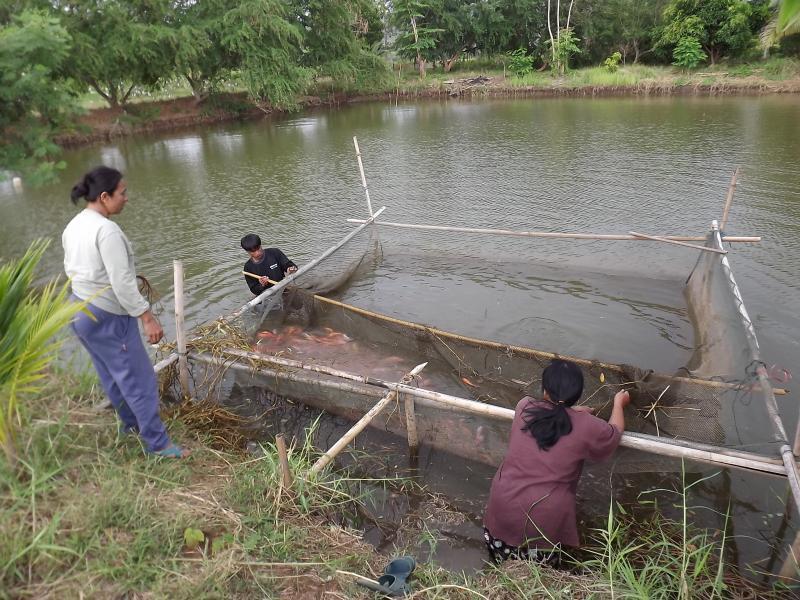
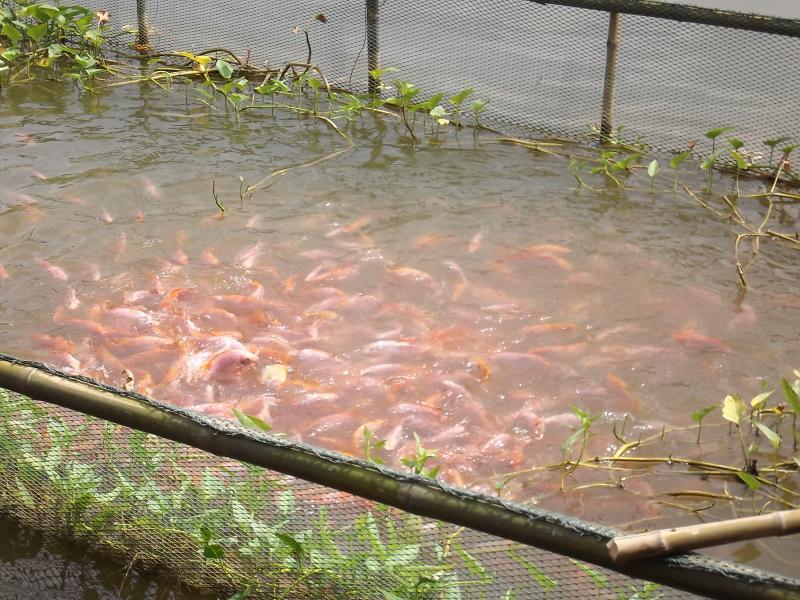

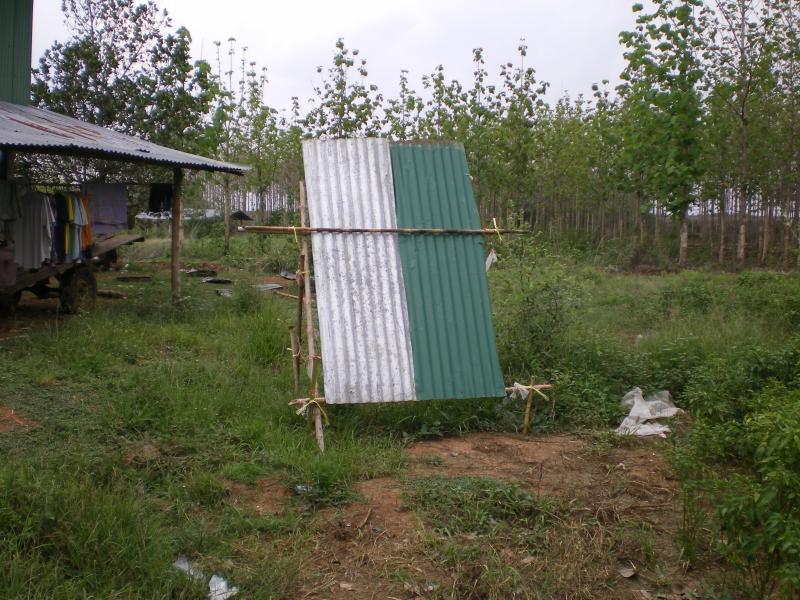
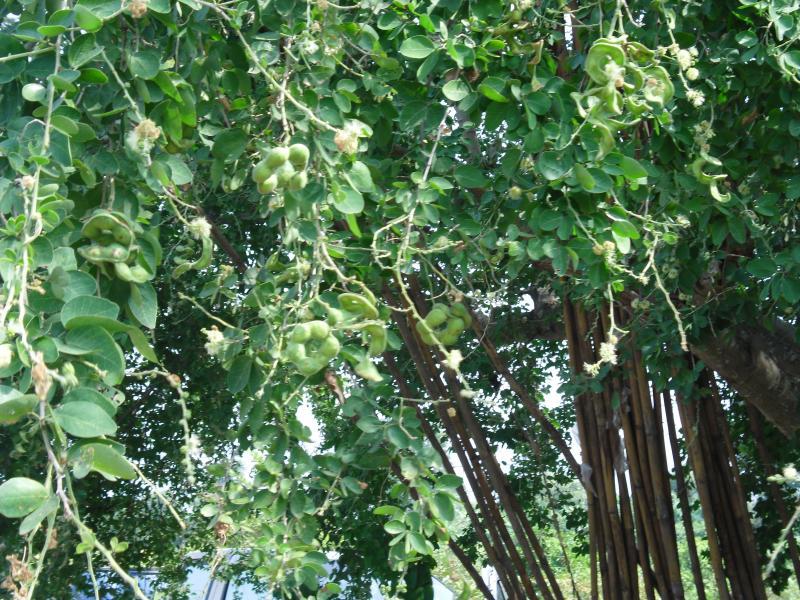
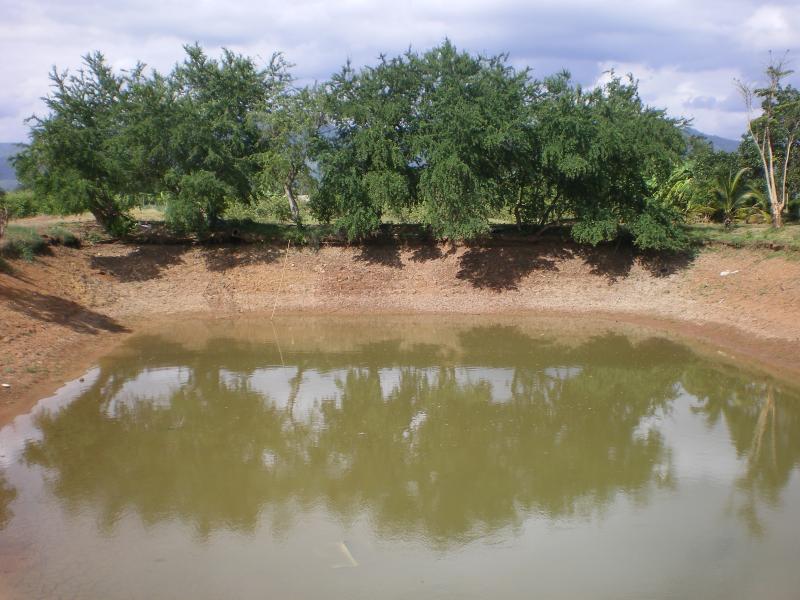
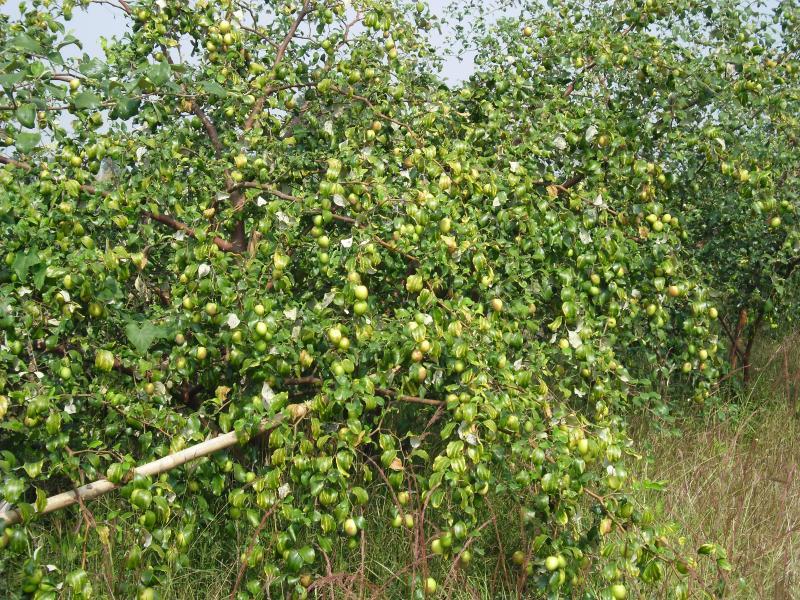
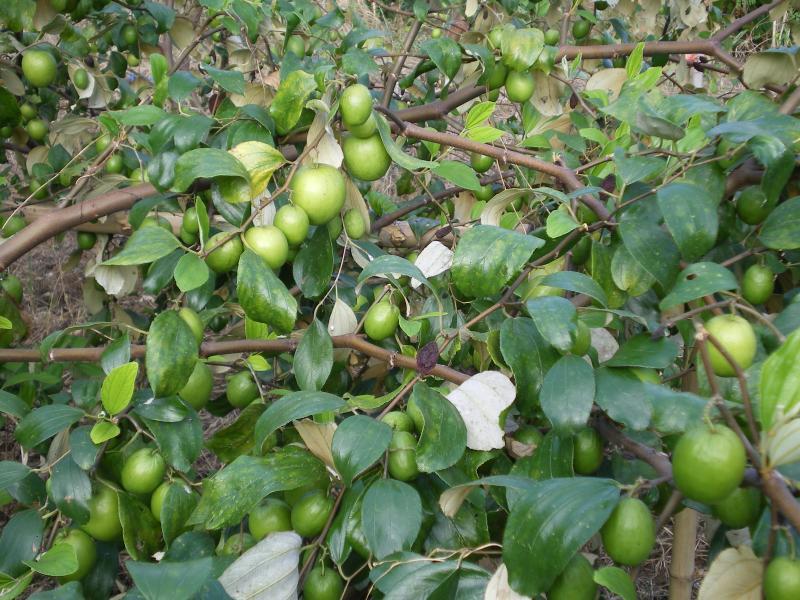
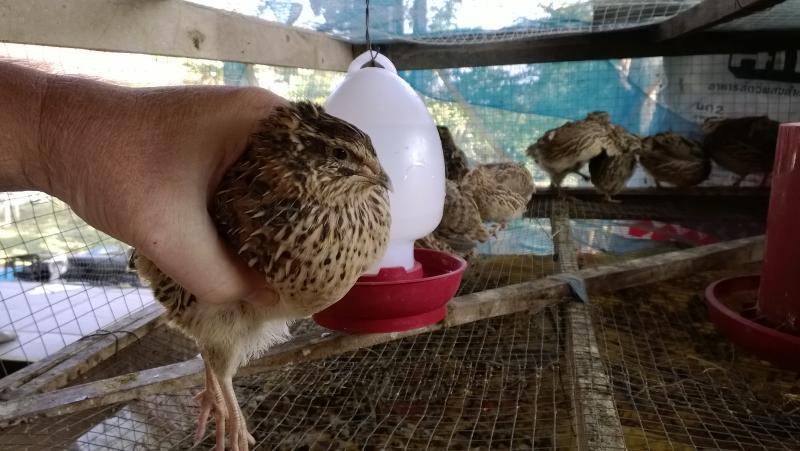
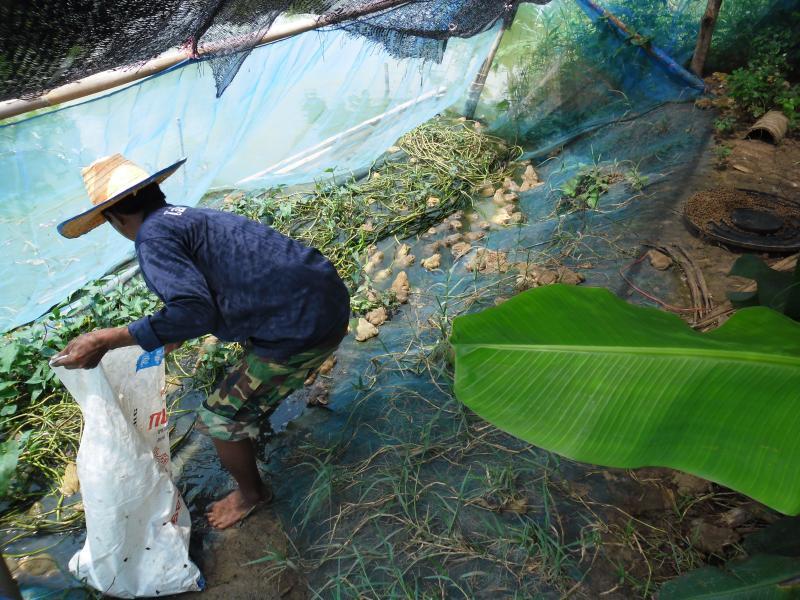

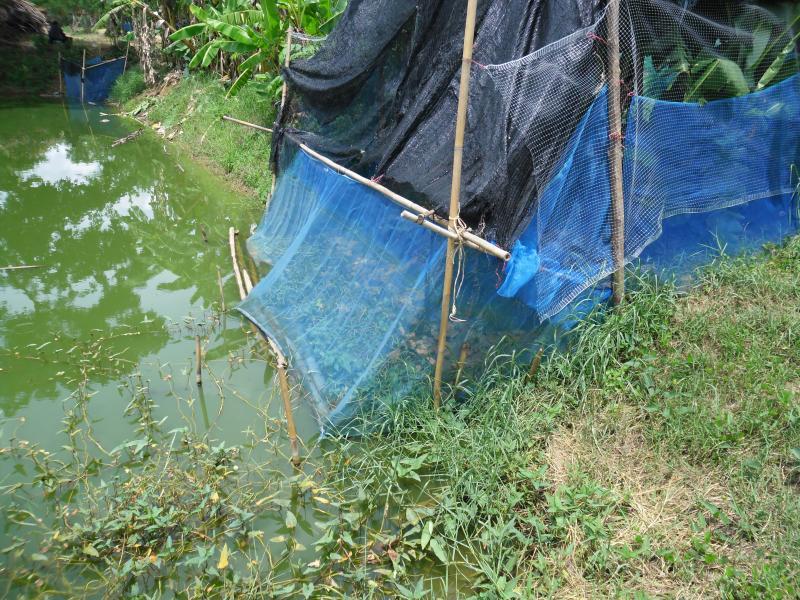

Red Claw Crayfish - revival
in Farming in Thailand Forum
Posted
Crayfish have been talked about for some time and there are quite a few people involved raising them. Here are a couple of questions
Is anyone selling mature crays for consumption (as opposed to breeding)? Or does anyone know of any market that sells them on a continuous basis and what the prices are? My stepson has been involved for a year and still has a long way to be in full production. The prices I "hear" are very high, but I can't find anyone actually selling them on a regular basis other than as breeders. We have a small pond (15 m x 25 m) that has been drained and cleaned and the plan is to drop about 500 small ones in there as a test. Just looking for more information an the market, before he gets anymore involved.
Thanks